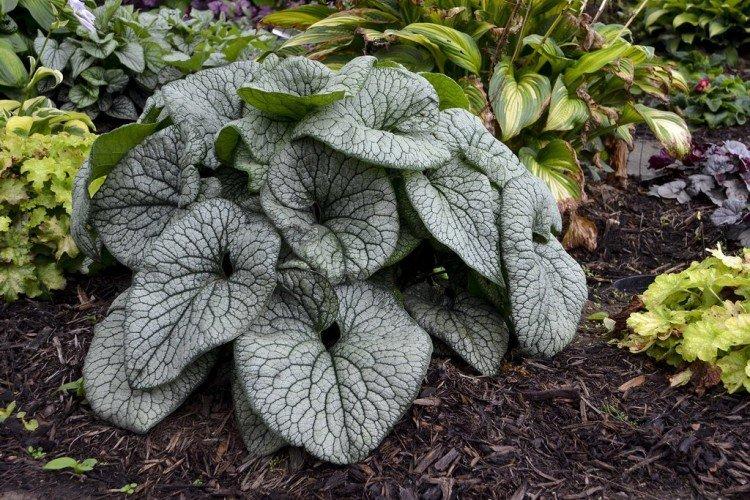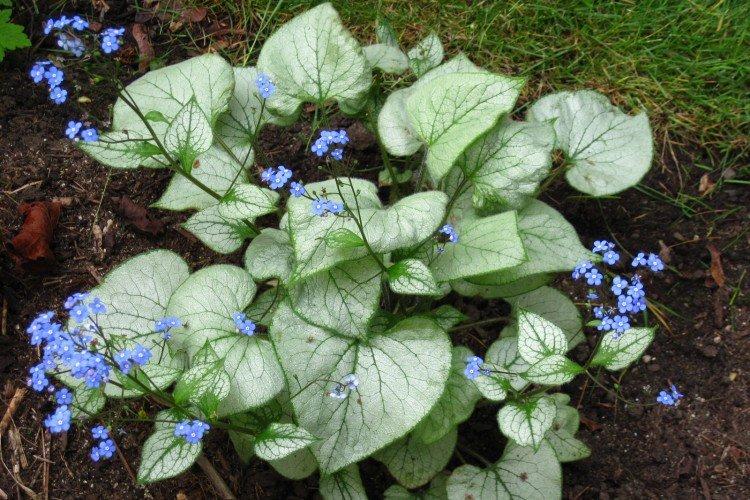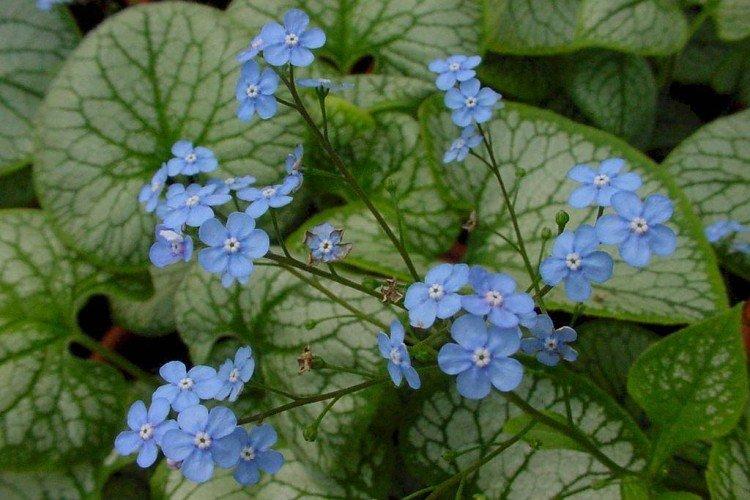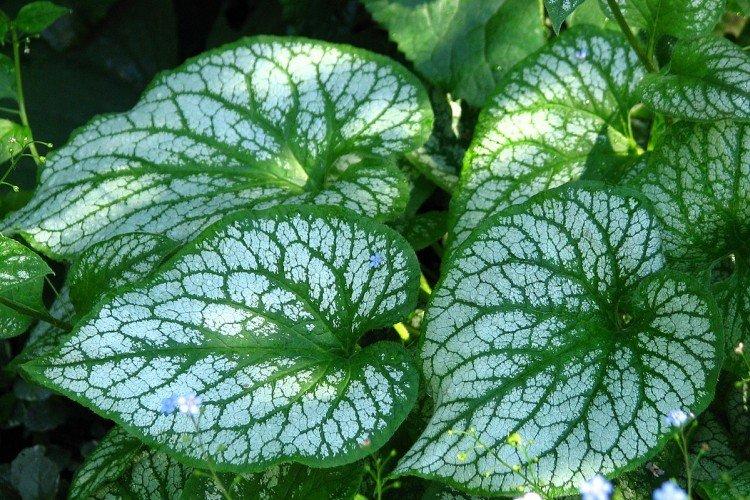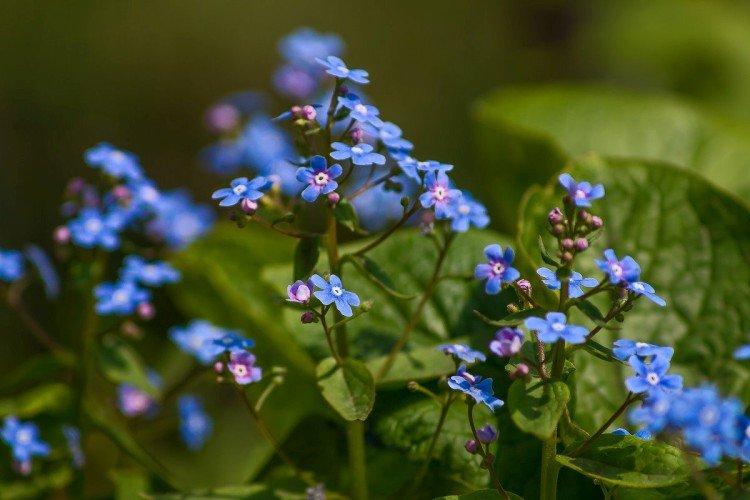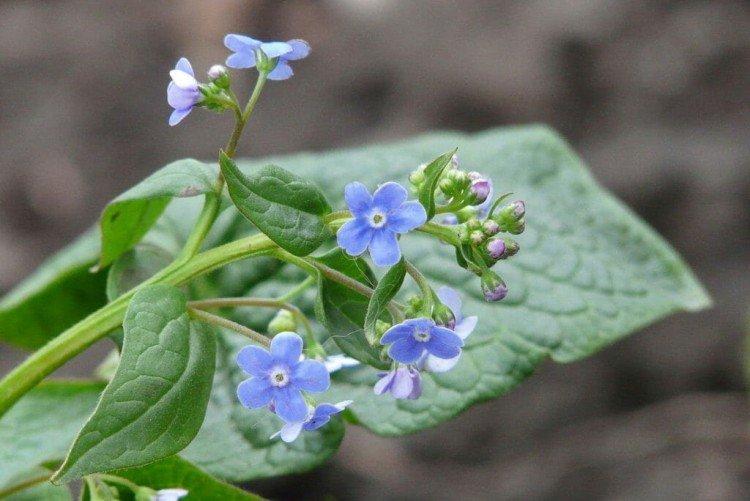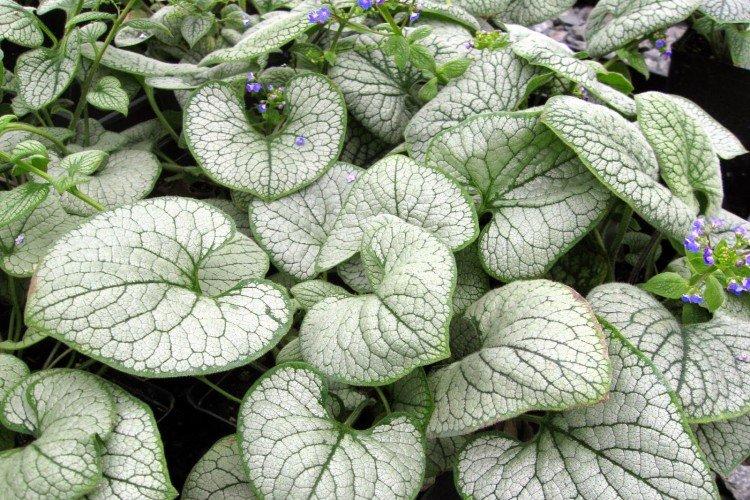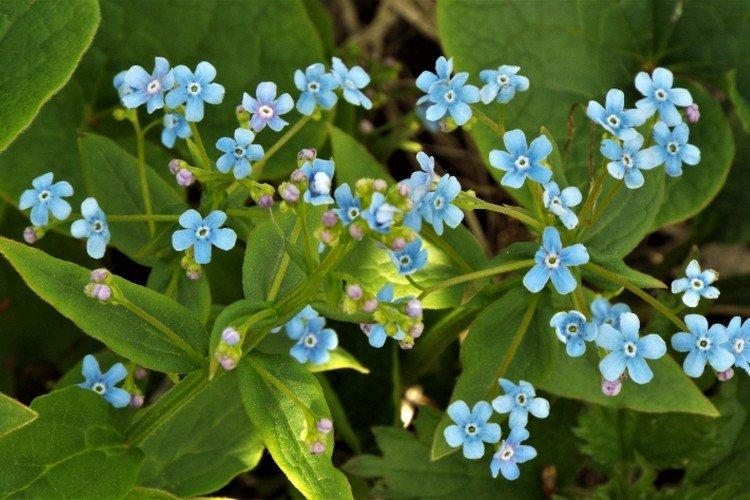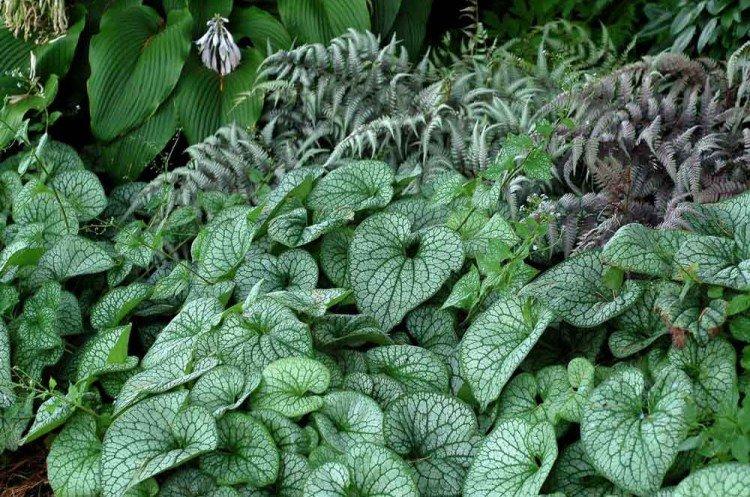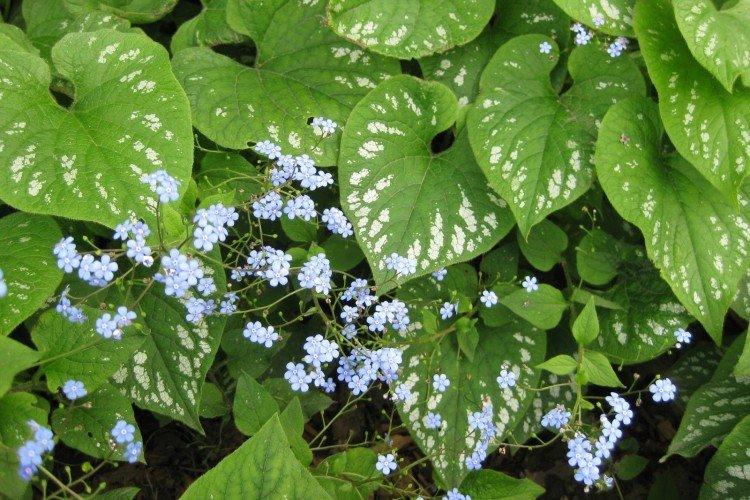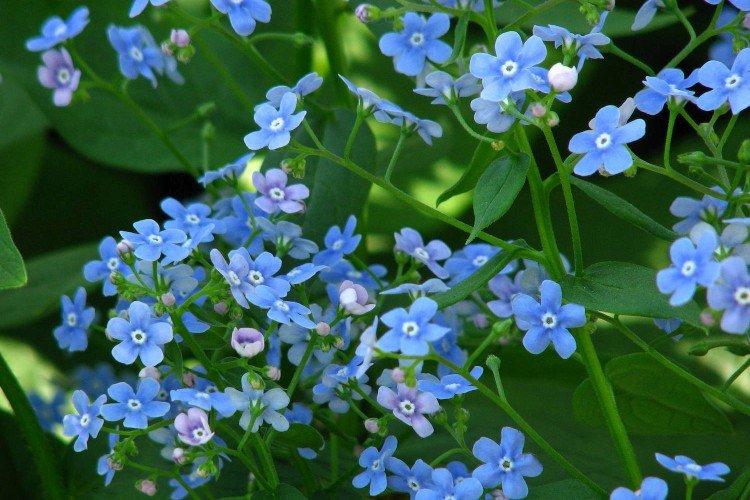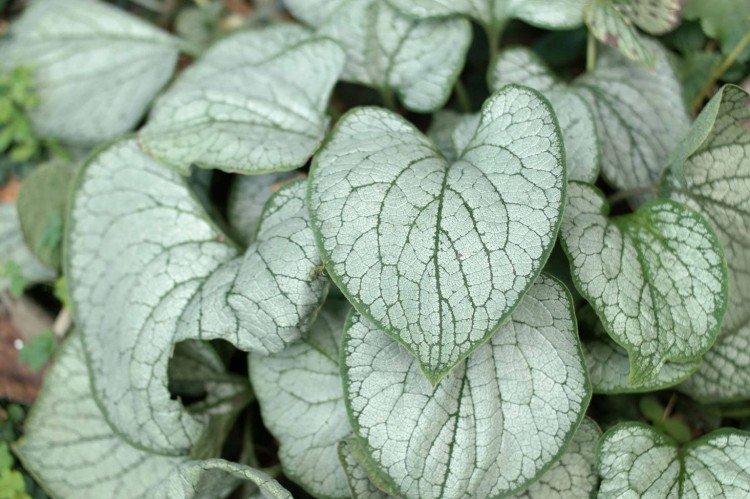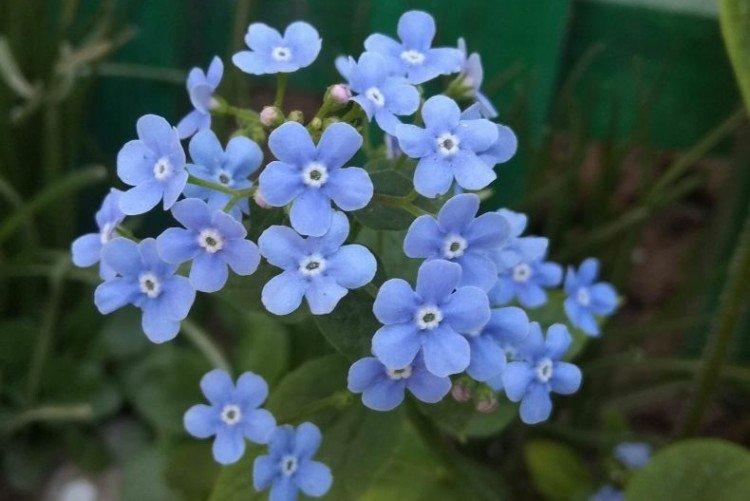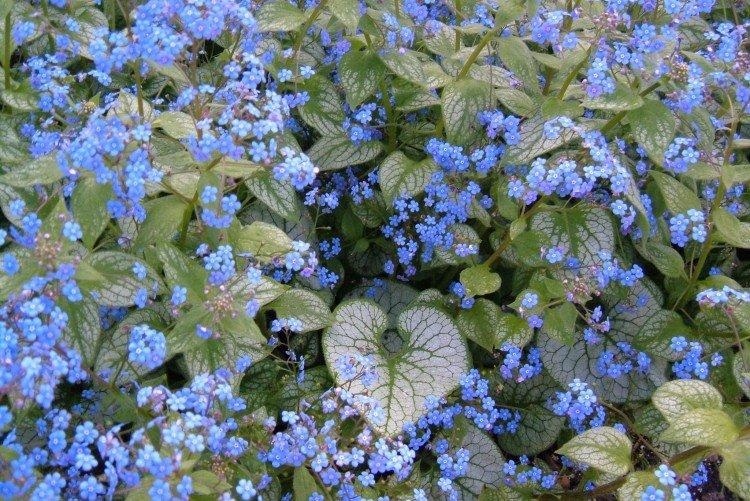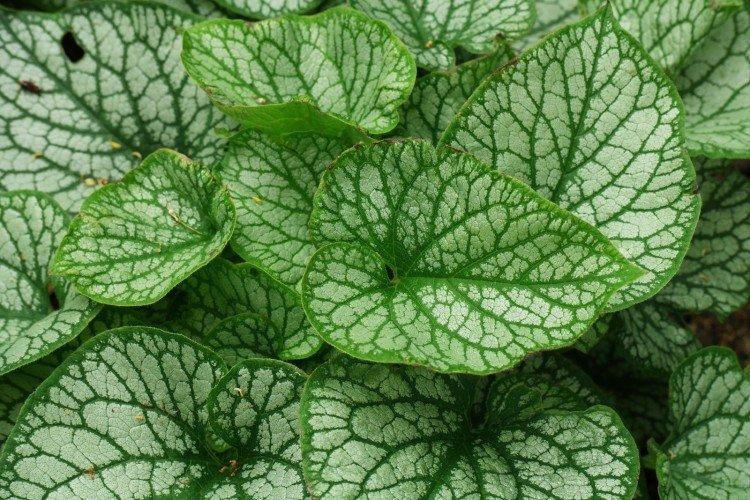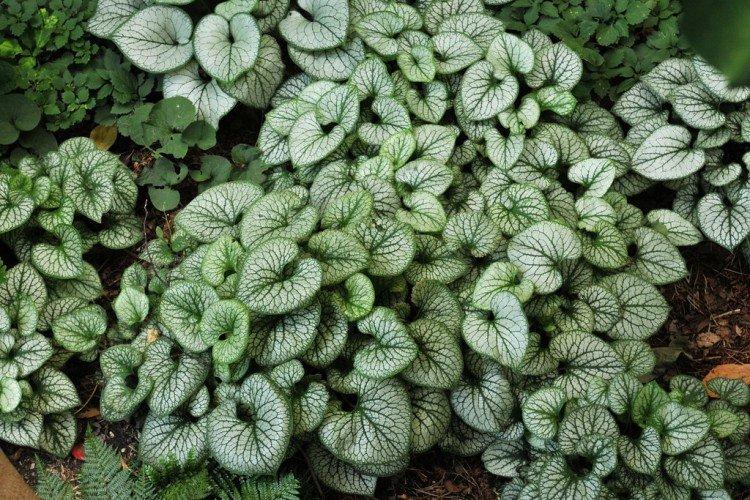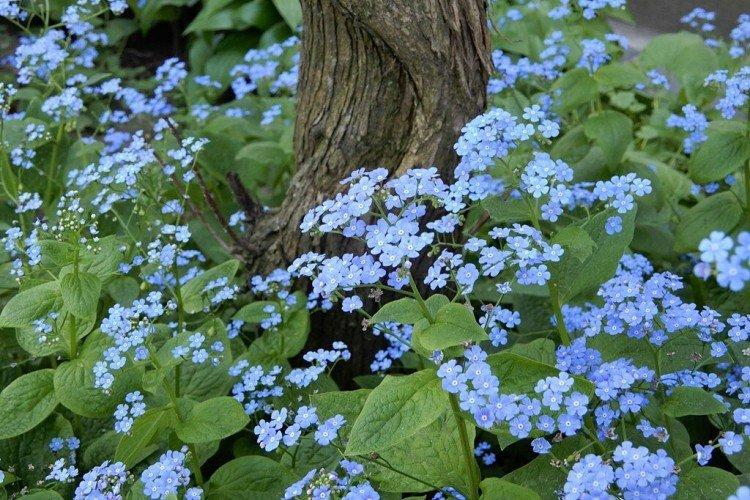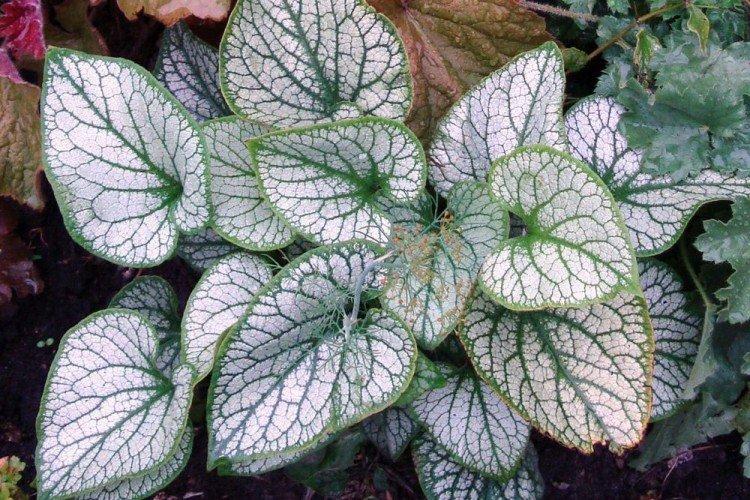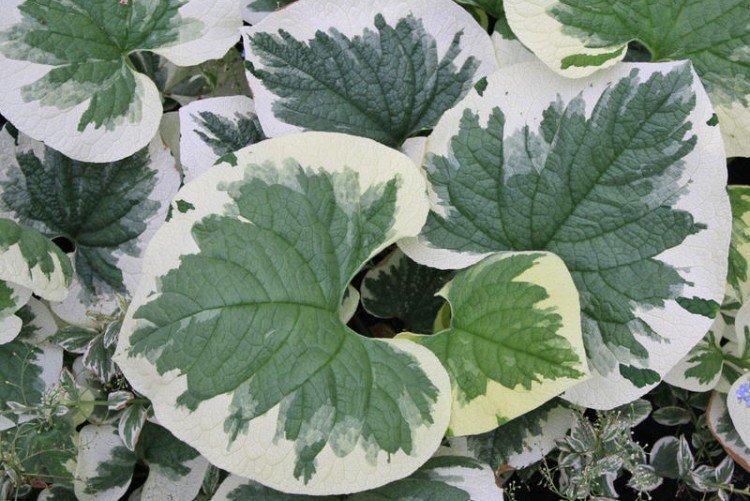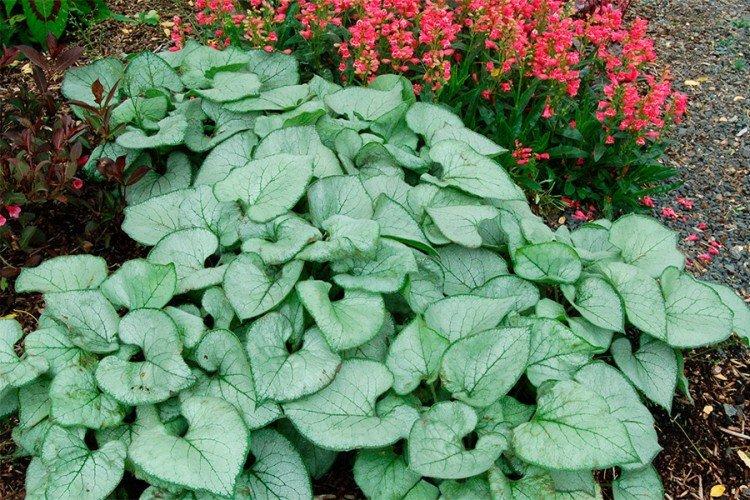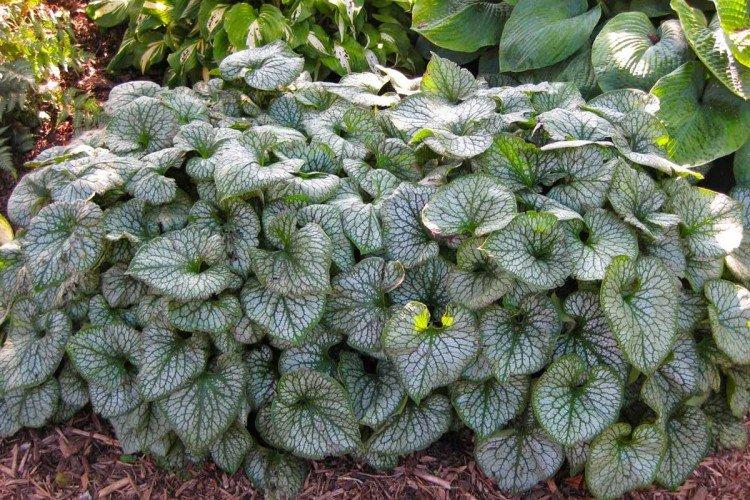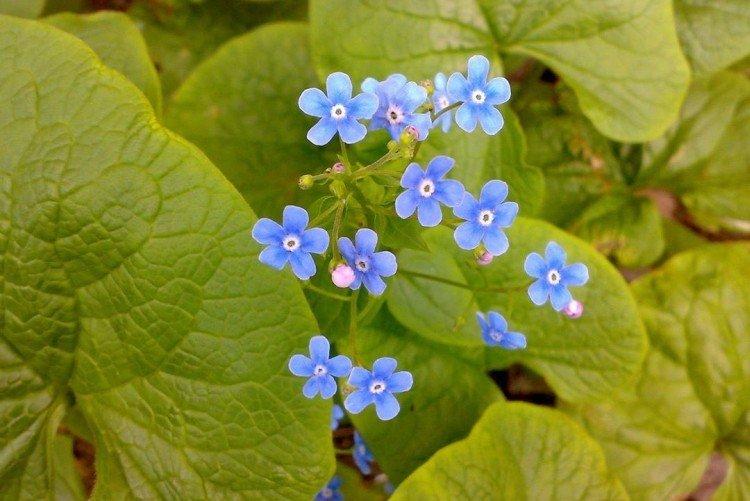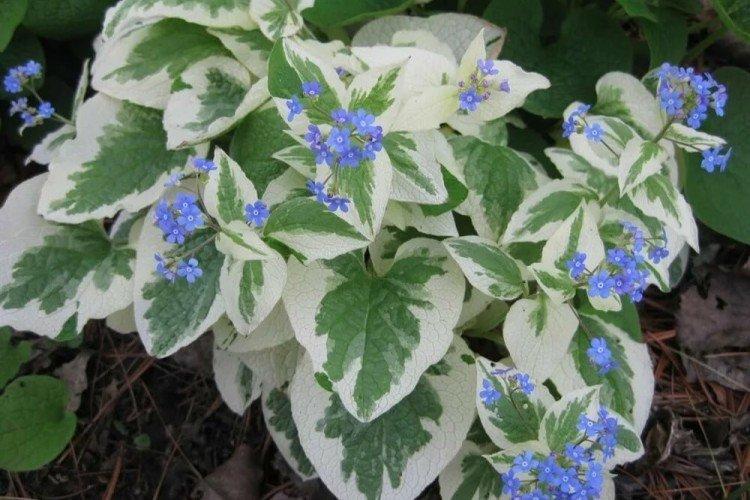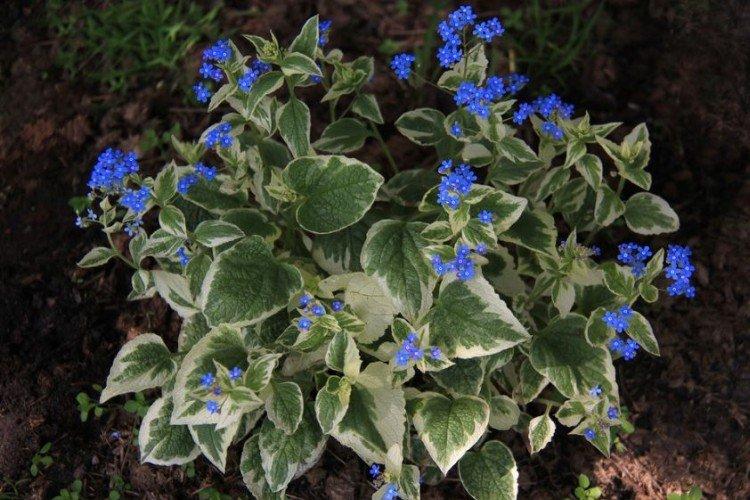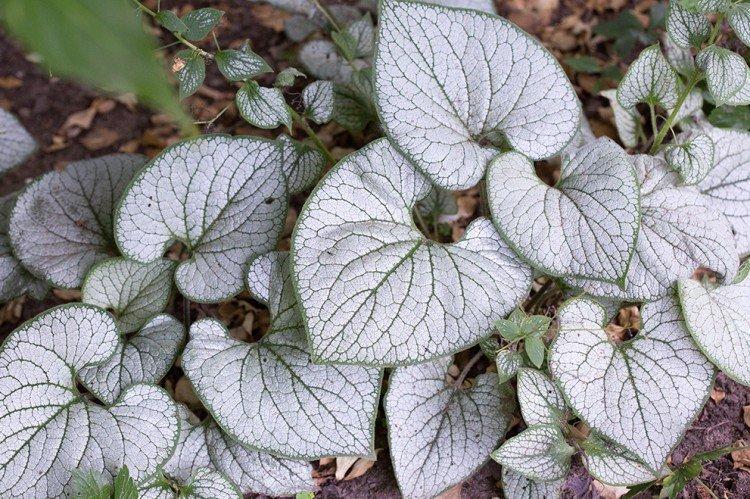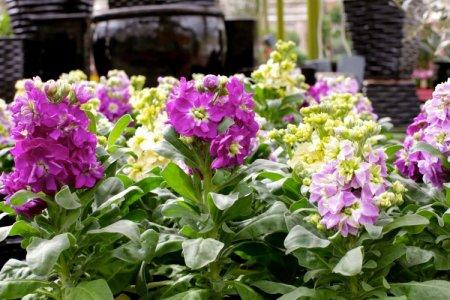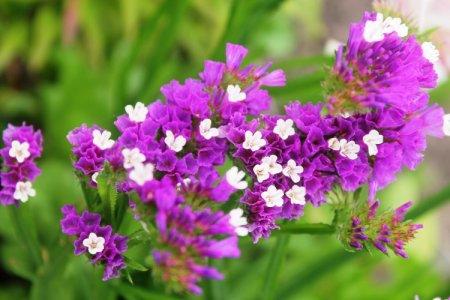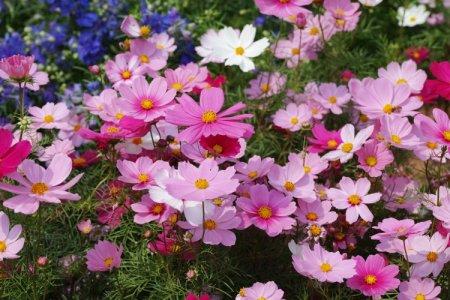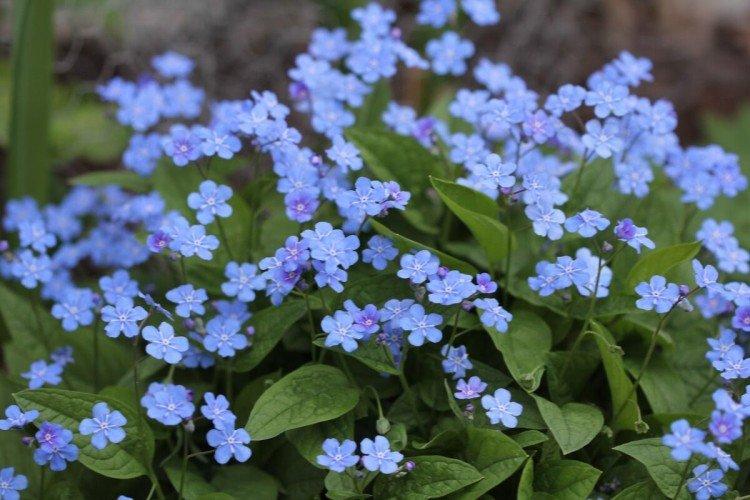
Brunner is very reminiscent of a bizarre hybrid of violets and forget-me-nots. She has beautiful ornamental leaves and charming blue flowers, gathered in wide inflorescences. Today we want to tell you more about this wonderful plant!
general information
Brunner is a perennial that is especially common in Siberia and the Caucasus. In gardening, it is planted to decorate curbs, landscape compositions and all kinds of mixborders.
The average height of the herbaceous bush is 50 cm. Large, whole leaves on long stalks resemble a heart. Shoots are slightly pubescent, due to which they seem softer.
Brunner flowers are very small, no more than 1 cm in diameter, and most often even less. They really resemble forget-me-nots, and for this feature the people called Brunner the forget-me-not. But you can see a slight difference: the spot in the middle of the brunner is white, not yellow.
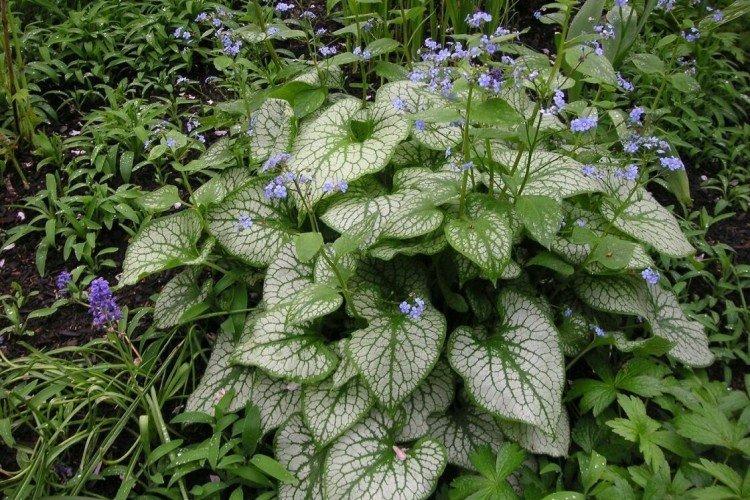
Brunner species
In nature, there are only three main types of brunner, and only two of them are cultivated.
Siberian brunner
It is a large decorative species up to 60 cm high with a powerful rhizome and pubescent shoots. The dense, heart-shaped leaves are embossed and slightly velvety. The flowers are about 5 mm in diameter and are collected in wide paniculate inflorescences. Siberian brunner blooms in May.
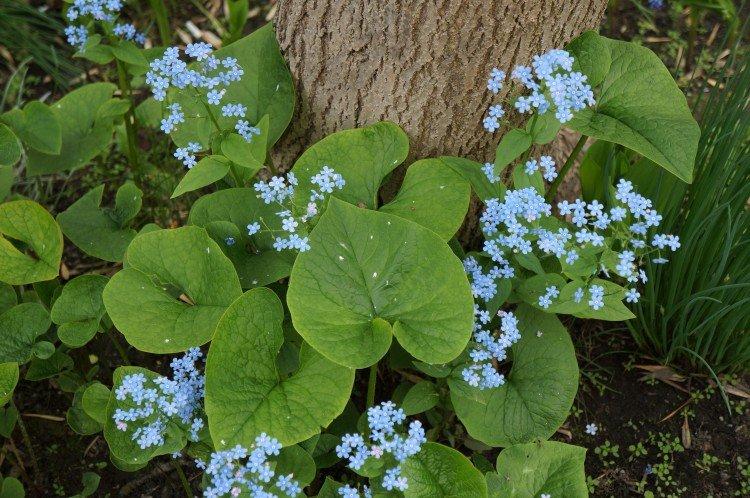
Large-leaved brunner
She is Caucasian. It is a branched bush up to 40 cm high with large basal leaves. They are dark green on the top and silvery on the back. In everyday life, a large-leaved brunner is not so capricious, and with the right choice of a site, it does not require additional maintenance at all. Flowering occurs in the second half of spring, but in the fall you can achieve a second.
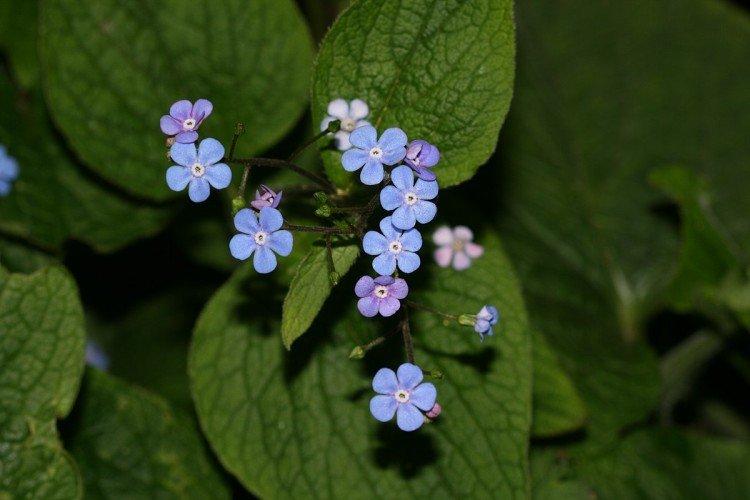
Brunner's care
The main features of Brunner's care are directly related to her habitat habitat. In nature, it grows in shady moist forests, and in the garden these needs remain!
Temperature and lighting
Brunner is very difficult to endure heat and drought, and even frost is given to her easier. In warm regions, it is imperative to choose a fairly shady area, because direct sunlight will simply destroy the delicate flower.
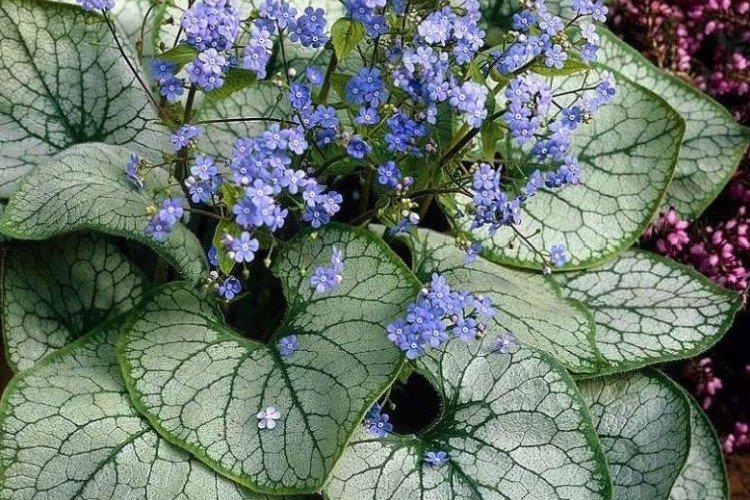
Watering
With the right choice of a wet area, the Brunner practically does not need to additionally water. Only on very hot and dry days, or if you notice that the leaves began to droop from dryness.
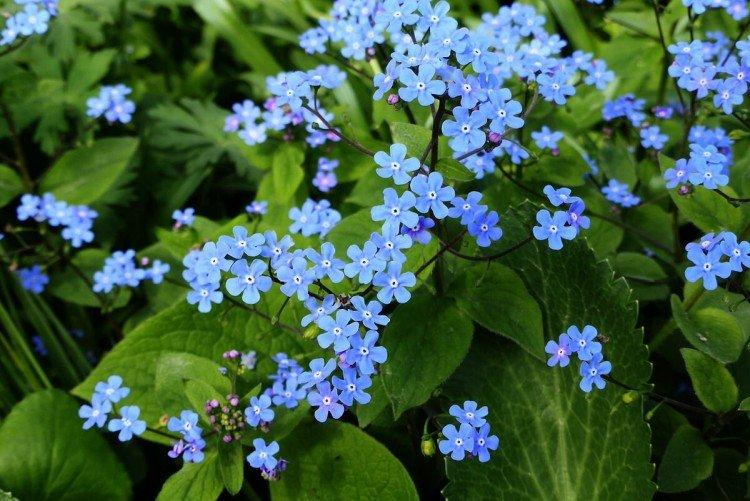
The soil
Brunner prefers moist clay soils and feels great near bodies of water. The Siberian variety is more capricious to the quality and composition of the soil. Separately, we recommend mulching the area around with bark, sawdust or ash.
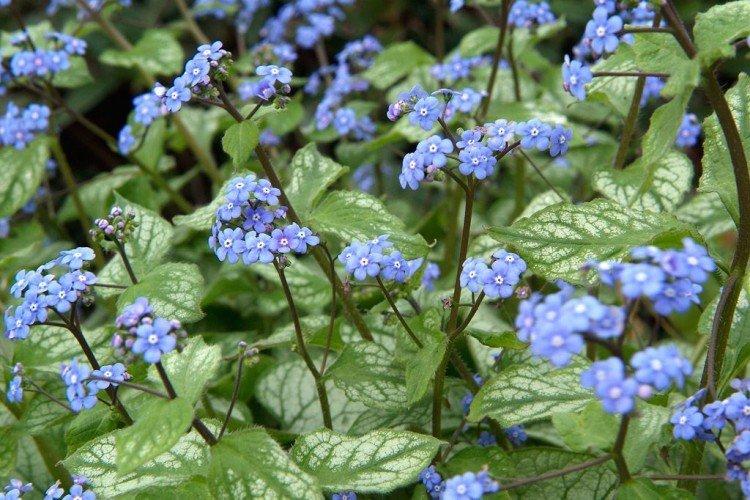
Fertilizers and feeding
Compost mulch is an excellent fertilizer in itself for Brunners. At the beginning of spring, after the snow melts, use the complex fertilizing granules so that the leaves grow faster and brighter. Do not need anything else.
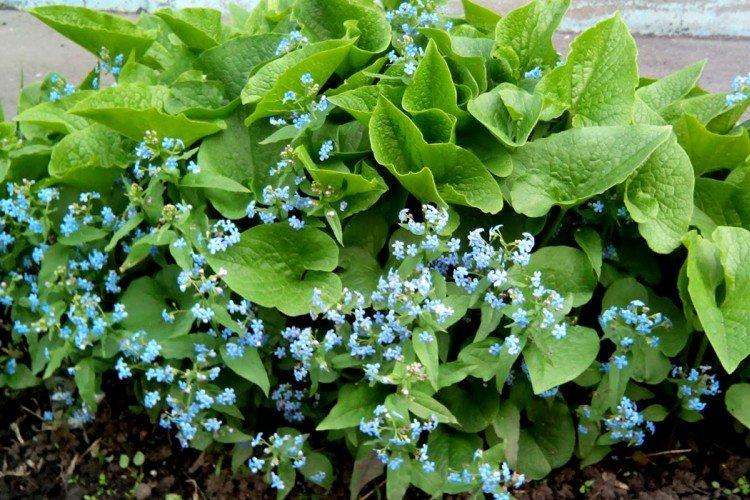
Weeding
The area around the brunner must be systematically weeded out. But in no case should you loosen the soil and generally make any sudden movements. And all because the roots of the plant are too close.
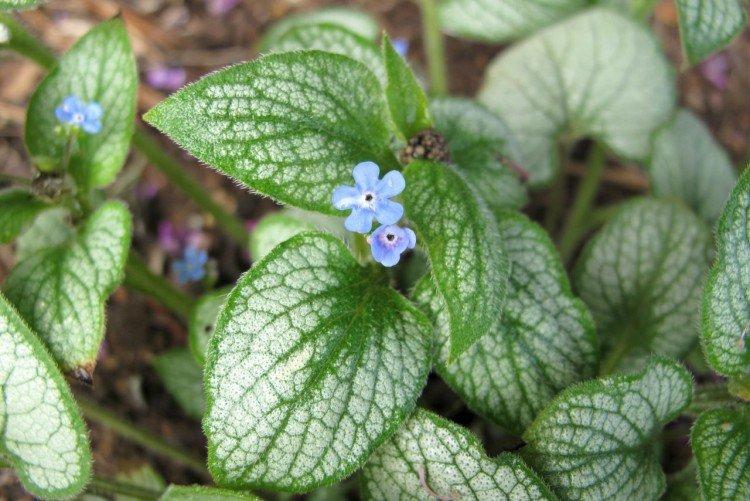
Pruning
After flowering, Brunner leaves begin to deteriorate and become stained. It is not a disease, but a natural life cycle. It is better to remove such leaves as they wilt, and then the bush will release new ones, which will remain even before frost.
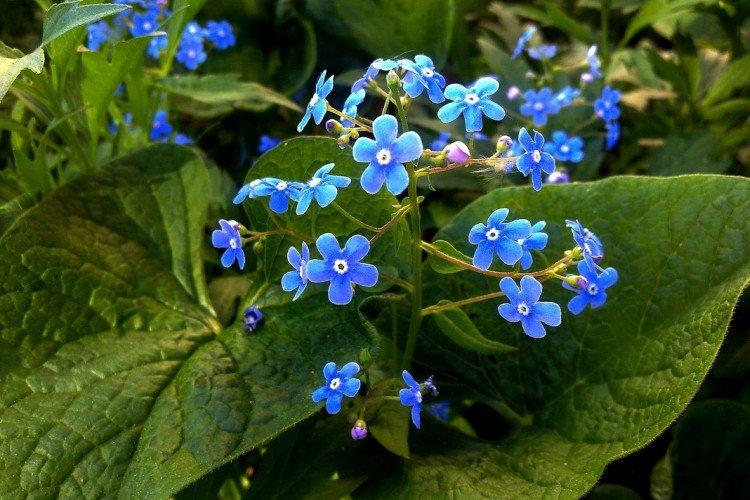
Wintering
In the fall, cut off all the remaining leaves and mulch the area with Brunner peat. In warmer regions, even such a shelter is not required, because this is a winter-hardy plant.
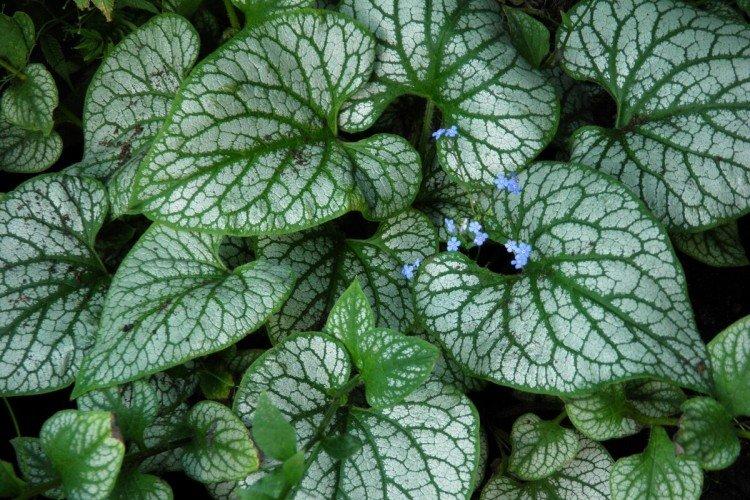
Planting and breeding
Remember that a spring planting or a Brunner transplant can hardly be tolerated. Only some varieties of large-leaved can be carefully loaded with an earthen clod.Otherwise, the landing is carried out in the second half of the summer, and the transplant is carried out in the fall.
If you want to plant Brunner from seeds, sow them directly into the ground at the end of autumn. Otherwise, you will have to spend the whole winter observing the temperature regime for containers of future seedlings.
Large Brunner bushes can be propagated by division. Dig it out carefully after flowering, rinse the roots, divide it into parts according to natural decay, plant in holes and fields. This method is better suited for large-leaved varieties.
Siberian brunner is best propagated by root cuttings. Cut out old and spoiled areas, separate healthy parts from them and break them so that buds remain on each cuttings for renewal. Root 4-6 cm strips immediately in the ground, burying them by half. Variegated varieties can only be propagated in this way.

Brunner diseases and pests
On rainy days, Brunner often suffers from brown spot, and sometimes powdery mildew. First, carefully cut out all damaged parts of the plant, and then treat it with fungicides.
The most dangerous pests of brunners are aphids and whiteflies. You can get rid of a small amount of aphids with soapy water, and in other cases, we advise you to immediately get chemical insecticides.
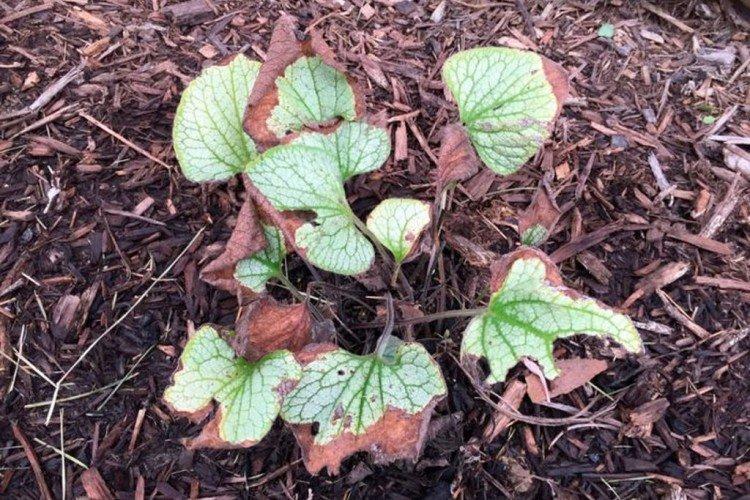
Brunner - photo
Brunner's is the best choice for wet shady areas. After all, you probably understand how difficult it is to find beautiful decorative flowers for such conditions!
